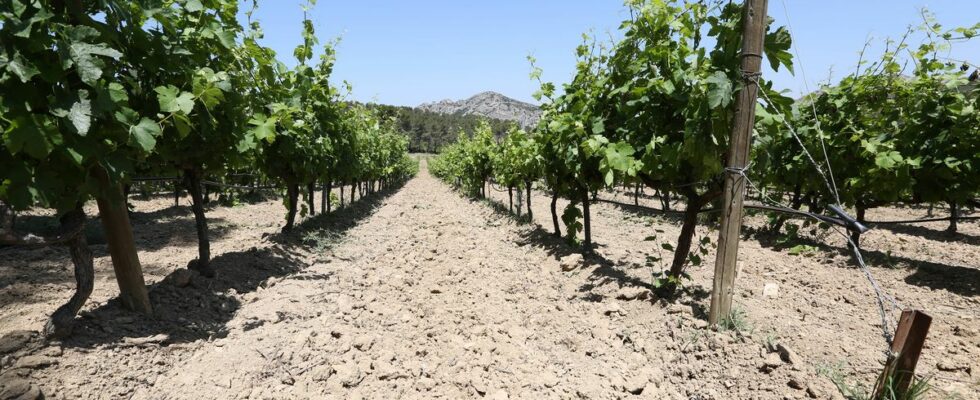In recent years, Languedoc winegrowers have paid a heavy price for climate change. Hail, frost or high temperatures regularly devastate the plots, ruining, in just a few hours, the work of an entire year. Aware that these meteorological hazards are likely to be more and more regular, and more and more virulent, in the coming years, some winegrowers are experimenting with grape varieties known to be more resistant. To drought, in particular.
The department of Hérault is currently carrying out a vast study on these pioneers, who have planted varieties that are less fragile than those traditionally known in the region. If these grape varieties resist better to heat shocks, it is, in particular, because their roots develop more deeply than the others, to seek nutrients in the ground, or because the skin of the grape is thicker.
“The vineyard of the next century”
“The specialists say it, we are going to experience episodes [caniculaires] more and more severe, says Gisèle Soteras, head of agricultural sectors in the Hérault department. And the winegrowers are worried. Of course, part of the solution is irrigation. But it has a cost. And there are areas where we will soon have no water resources. This is why we are interested in grape varieties which, naturally, will be able to survive, despite the drought. And which are less greedy in water. »
These more resistant grape varieties come from regions even more arid than the south of France, in particular the Douro Valley, in Portugal. Among these varieties more muscular than the others, there is the Touriga Nacional, a red, and the Alavarinho, a white. In Languedoc, around fifty winegrowers are experimenting with these grape varieties of the future. For some, it’s very recent. But for others, it is no longer an experiment, and cuvées are already available. This is the case of Château Ciceron, near Lagrasse, in Aude. 11 years ago, the winemaker, Claude Vialade, decided, in this estate nestled in the heart of the Corbières, to experiment with “the vineyard of the next century”, she confides.
“We only add a homeopathic dose of water”
“The climatic conditions are not ‘normal’, so if we apply classic viticulture, faced with a situation that is exceptional, we run the risk of failure. We absolutely have to adapt. The winegrower pulled out everything in this area, and turned it into a veritable laboratory, imagining a “water-efficient” vine. By choosing resistant grape varieties, which she discovered through her experience in the wine world. And by adopting an ingenious method. “We only add a homeopathic dose of water, in the spring, when the bud turns into fruit”, a key moment, explains Claude Vialade, who today produces 50 to 60 hectoliters per hectare. “More than ten years later, the result is spectacular. The vines are magnificent, the woods are very resistant, and the plants of very high quality. »
But these grape varieties that are more suited to hot weather have other qualities. Especially taste. If Henri Bernabé, from the Saint-Clément estate, in Hérault, for example, chose to plant plots of Touriga Nacional, it is, first of all, “because of the quality of the wines that this grape variety produces”, he notes. Its resistance to drought is the little extra. A little extra that could well be essential in a few years.

